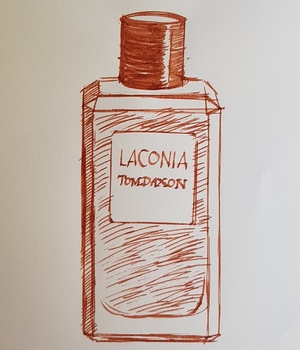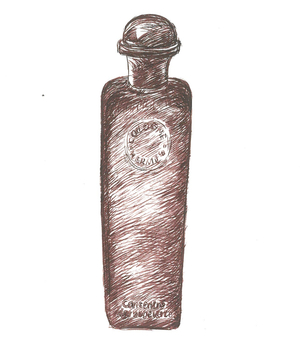Tagged With ‘lemonade’
Tom Daxon
Laconia
2 July, 2018
 The Greek region of Laconia includes some of the most historic and spectacular parts of the Peloponnese, including the city of Sparta (the regional capital), the Mani peninsula and, on its eastern edge, the extraordinary presque-île of Monemvasia. Seen from the mainland, this huge rock – over 100 metres high, 300 metres wide and a kilometre long – towers over the sea that encloses it, surrounded by precipitous cliffs on every side. Connected to the shore by a narrow causeway, it makes a formidable natural fortress, and in the middle ages an important city grew up on its summit, connected to a small walled town on the narrow shelf at its base.
The Greek region of Laconia includes some of the most historic and spectacular parts of the Peloponnese, including the city of Sparta (the regional capital), the Mani peninsula and, on its eastern edge, the extraordinary presque-île of Monemvasia. Seen from the mainland, this huge rock – over 100 metres high, 300 metres wide and a kilometre long – towers over the sea that encloses it, surrounded by precipitous cliffs on every side. Connected to the shore by a narrow causeway, it makes a formidable natural fortress, and in the middle ages an important city grew up on its summit, connected to a small walled town on the narrow shelf at its base.
Lacking water and reliant on man-made cisterns cut into the rock, the city was gradually abandoned and today lies in romantic ruins, overgrown with scrub and difficult to explore. But the little town has been gradually restored, and now forms a car-free tourist haven. It was while staying at a luxury hotel here that British perfumer Tom Daxon found the inspiration for his latest scent, in the form of lemonade made with ice, local mint and honey and lemons grown on the hotel’s own estate. He’s named it after the region, which itself gave us the word ‘laconic’, apparently because Spartans were famously sparing with words.
Like me, Daxon is a fan of colognes, especially for the summer months, but he also feels that his customers want something that lasts longer than a few minutes on their skin. Citrus scents, refreshing though they may be, are notoriously short-lived, so the question was how to extend his new fragrance in an interesting way. His solution includes quite a long list of zingy and green ingredients, starting with lemon, yellow mandarin, orange and bergamot, followed by violet leaf, spearmint and clary sage, as well as ginger, cubeb, pink pepper and cardamom, all underpinned by vetiver and long-lasting synthetic musks.
The result is an attractive, fresh-smelling perfume with good staying power, though personally I’m willing to forego longevity in a cologne in favour of that all-important if all too short-lived blast of uplifting freshness – a laconic cologne, if you will. But when you’re paying £155 for 100ml, I can see the argument in favour of depth and development. I also admire the design of Daxon’s chunky, faceted bottles and smart monochrome packaging, which adds to the feeling of weight and lasting quality.
Hermès
Concentré d’Orange Verte
18 July, 2014
 In 1979, Hermès launched a brilliant take on the classic men’s eau-de-cologne. Simply called Eau de Cologne d’Hermès, it was created by Françoise Caron, who you could almost say had perfume in her blood. Born in the one-time capital of French fragrance, the Provençal town of Grasse, into a family that worked in the perfume trade, both she and her brother, Olivier Cresp, became highly regarded professional perfumers in their own right.
In 1979, Hermès launched a brilliant take on the classic men’s eau-de-cologne. Simply called Eau de Cologne d’Hermès, it was created by Françoise Caron, who you could almost say had perfume in her blood. Born in the one-time capital of French fragrance, the Provençal town of Grasse, into a family that worked in the perfume trade, both she and her brother, Olivier Cresp, became highly regarded professional perfumers in their own right.
Many perfumes are variations on a theme, and the fresh, citrusy scent of eau-de-cologne is probably the best-known theme of all. But some variations are more interesting and successful than others, and Françoise Caron’s master-stroke was to turn up the volume, if you like, on a single ingredient – bitter orange – that plays a subsidiary role in most colognes.
The effect is delicious and bracingly sour-sweet, like a proper old-fashioned lemonade, but because orange is a more powerful, complex citrus scent than lemon it has far more depth and staying power. Françoise Caron also included mint (which adds a minor cooling touch), as well as lime and blackcurrant buds – which, if like me you have blackcurrant bushes in your garden, you’ll know have an intriguing scent, both sweet and slightly foxy.
Eau de Cologne d’Hermès continued in production until 1997, when Hermès changed its name to the slightly more individual Eau d’Orange Verte, though the scent remained the same. One criticism of Caron’s original perfume was that it didn’t last very long, and presumably as a response to this, in 2004 a concentrated version was released, tweaked by in-house perfumer Jean-Claude Ellena and helpfully called Concentré d’Orange Verte.
It’s this version I like best, I suppose because it seems to have retained all the character of Françoise Caron’s original yet packs a rather more powerful punch, and on my skin at least it certainly seems to last a good hour or two. It’s a zesty, uplifting and – I’d say – a happy scent, and one that I’d happily wear every day. Perfect for lifting the spirits on a dull grey Monday morning.